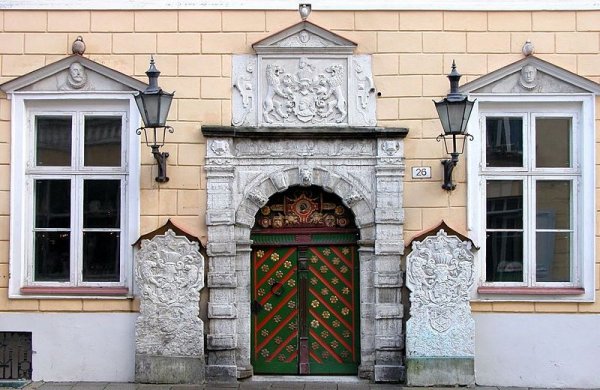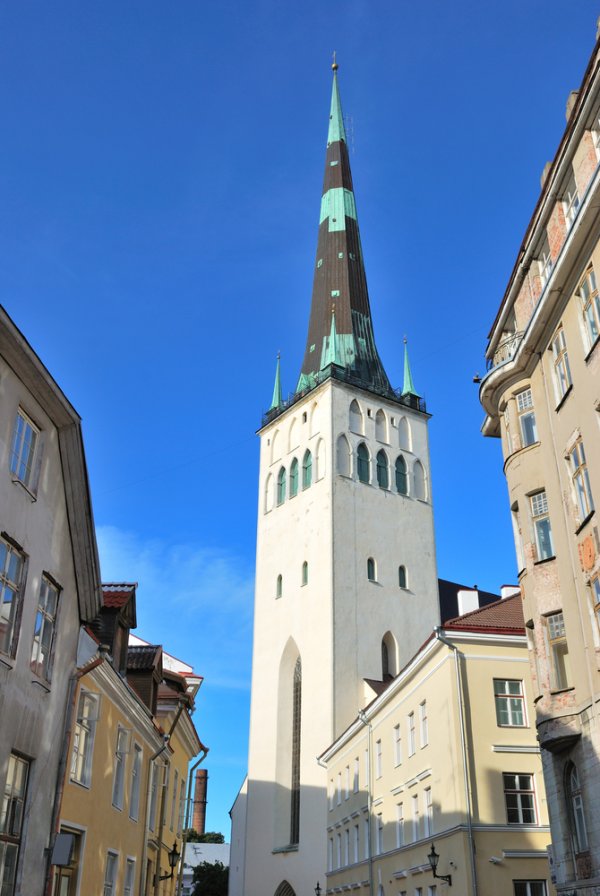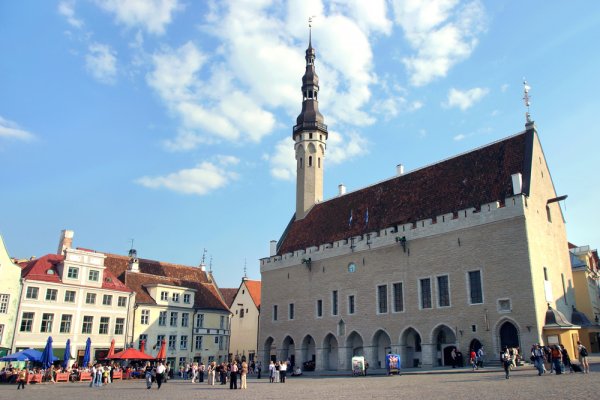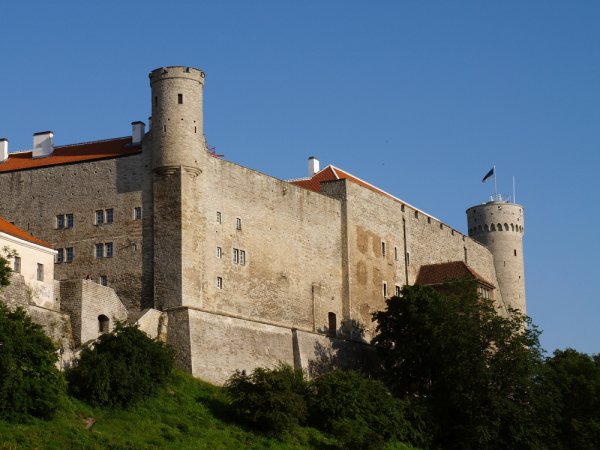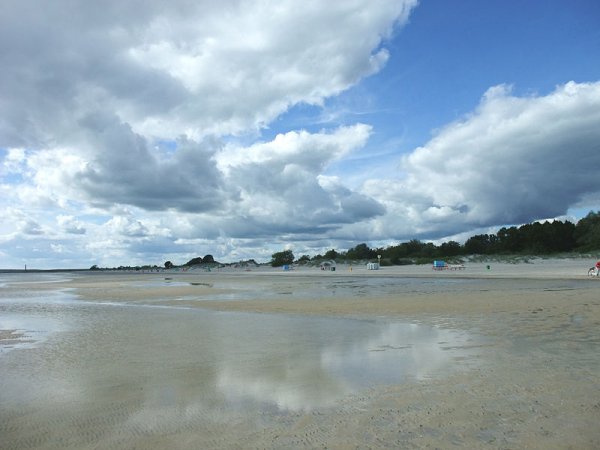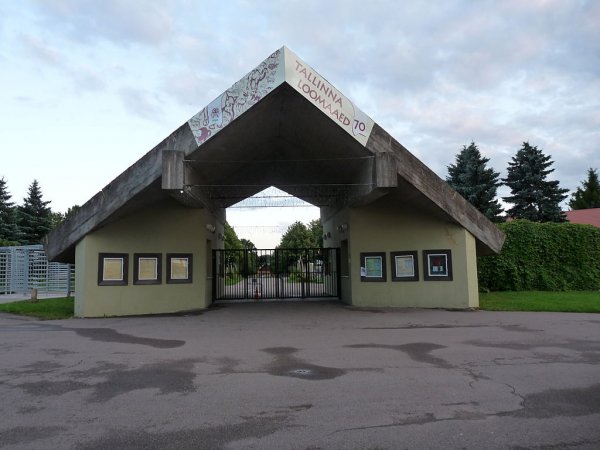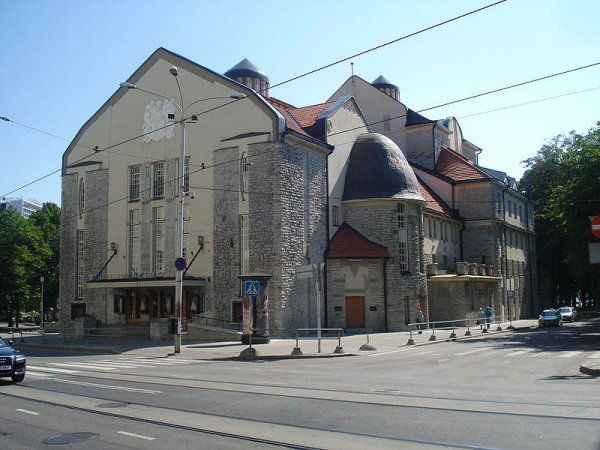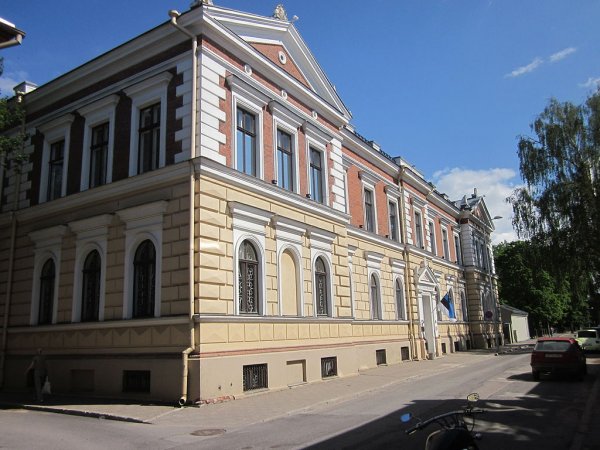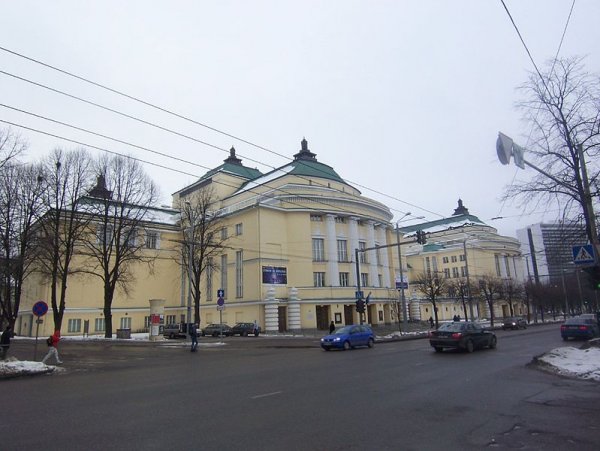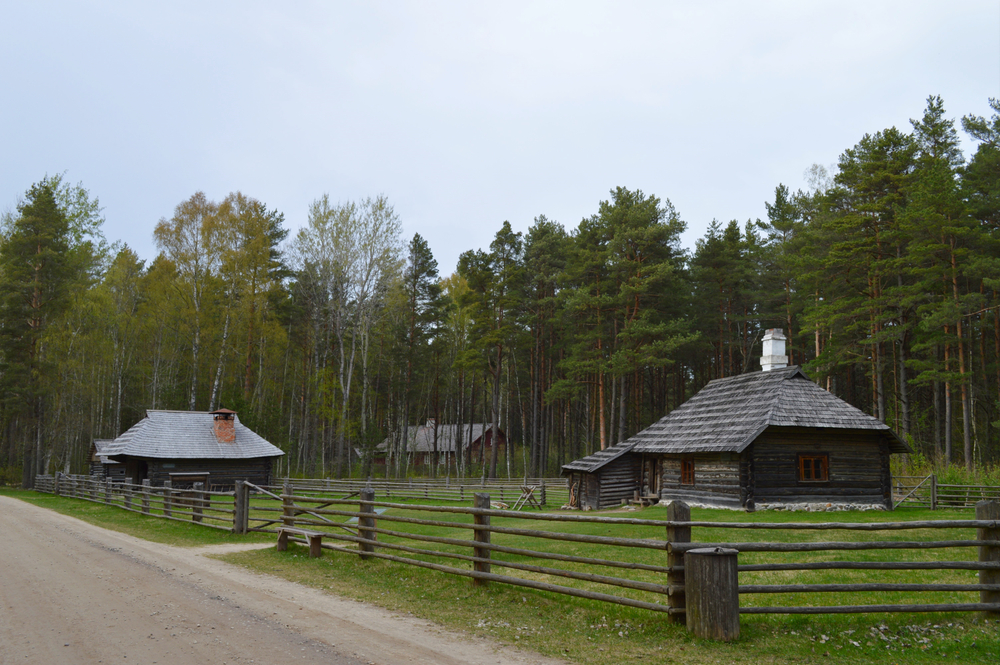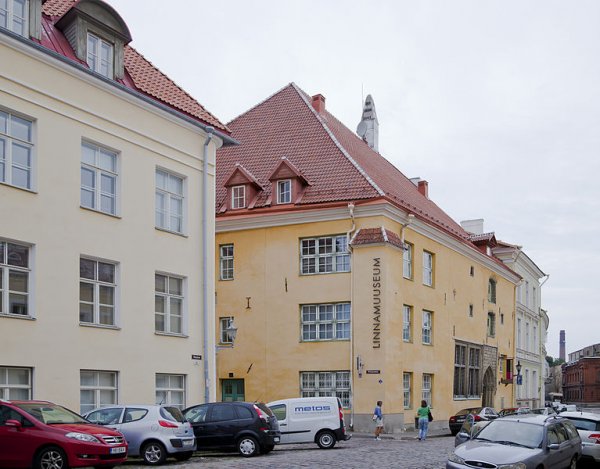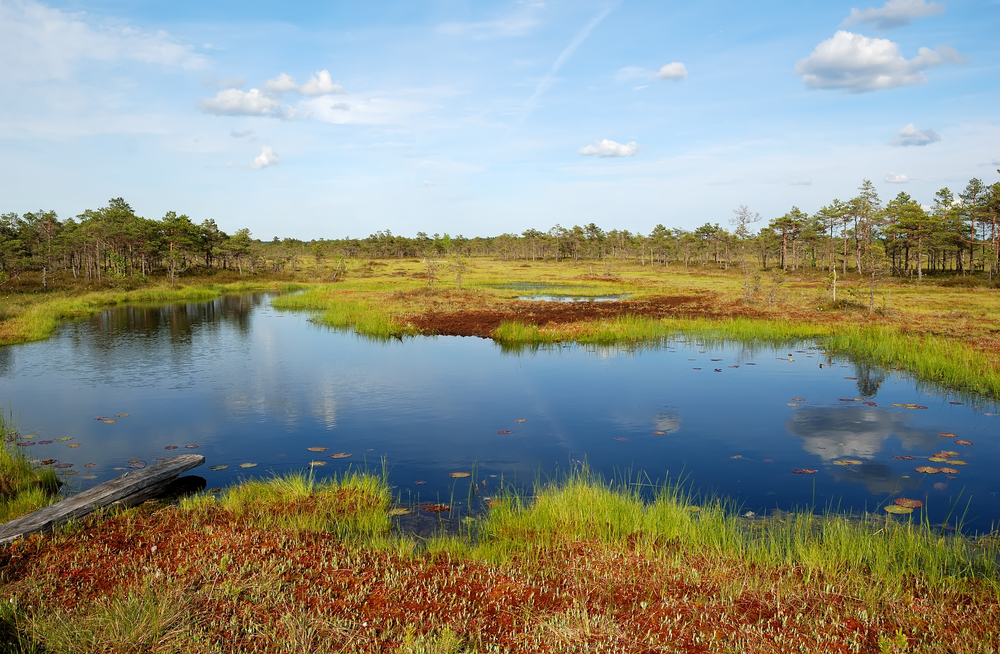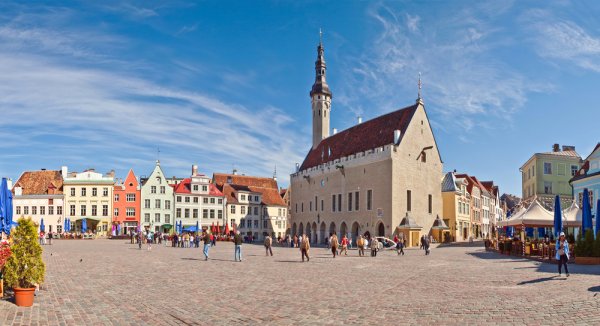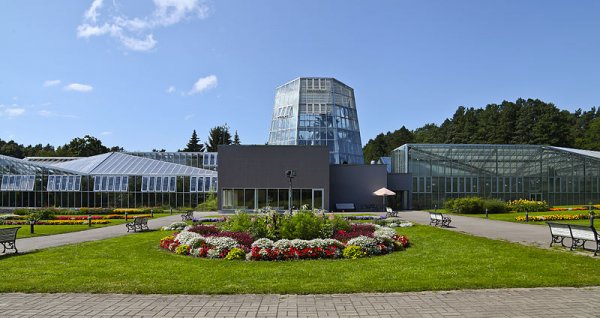Architectural Landmarks
Alexander Nevsky Cathedral
Aleksander Nevski Katedraal
Built from 1894 to 1900 to reflect a Russian Revival architectural style, this grand cathedral is an Orthodox church. Dedicated to Saint Alexander Nevsky, this tall cupola cathedral is a glorious landmark on Toompea hill. Although many Estonians view the cathedral as a relic of former Russian hegemony, the grandeur and glory of the church is still well preserved.
House of the Brotherhood of Black Heads
Mustpeade Maja
The Brotherhood was founded in 1399 to unite the young, single merchants of Tallinn. The building housing the Brotherhood was built in the 14th century and was redesigned in late 16th century using a Dutch architectural style. The doors and interiors of this building were lavishly decorated. The building was again renovated in 1908, giving it a neo-classical appearance. Today it can be used for concerts and other events. The Brotherhood in Tallinn disbanded in 1940 under Soviet occupation.
St. Olav's Church
Oleviste Kirik
With towers that rise to a height of 159 meters (521 feet), St. Olav's Church once boasted the distinction of being the tallest church in Medieval Europe. It was built using a Gothic style of architecture and is named after the Norwegian king Olav II Haraldsson. Seafarers honored him as their protector, since the tall steeple of the church acted like a signpost and helped mariners locate Tallinn, which was a major center for trade. The steeple has been struck by lightning at least eight times in its life, damaging the church and necessitating reconstruction.
Tallinn Town Hall
Tallinna Raekoda
The most popular monument in the country, the Tallinn Town Hall is located at the southern part of Raekoja Plats (Town Hall Square). Built in a Gothic style of architecture and made of limestone, the monument dates back to the 13th century. The high-pitched roof of the structure is shouldered by steep gables facing the former market square. The features of the building include a crenellated parapet with dragon head gargoyles, beautifully decorated windows and portals, weather vane, and a spire.
Toompea Castle
Toompea Loss
The Toompea Castle complex consists of the west wall, with the Tall Hermann tower that belonged to the medieval fortress of the Order of the Brothers of the Sword; the Government Administration building from the Czarist period; and the building housing the country's Parliament, Riigikogu. The Parliament building was built in the courtyard of the castle in the expressionist style and dates back to the 1920s. The Castle stands on a limestone hill (Toompea or Cathedral Hill) in the capital of Estonia. The hill stands about 20–30 meters (65–98 feet) higher than the city and extends over an area of 400 by 250 m (1,312 by 820 ft).
Attractions for Children
Pärnu Beach
This summer capital of the country is located on the coastline of the Baltic Sea. It is popularly known for its beach and health spa. This sandy beach stretches for a distance of one kilometer and hosts large crowds of locals and tourists during the summer. The beach is a popular spot for concerts and festivals, and provides visitors with a number of amenities like catering, storage lockers, and beach equipment. The variety of recreational activities includes roller-skating, kayaking, nightclubs, and drag racing events. Tourists are also attracted to the health spa, which offers mud baths, hydrotherapy, ozocerite therapies, massage, aromatherapy, and laser and electrotherapies.
Rocca al Mare Tivoli
Located on the sandstone bank of the Tallinn's Kopli Bay, Rocca al Mare Tivoli is the largest amusement park in the country. It provides great opportunities for family fun, offering 18 different rides and more than 100 video and carnival games. In addition, it also hosts daily shows that are performed in the main tent.
Tallinn Zoo
Tallinna Loomaaed
Founded in 1939 with the intention of protecting animals from cruelty, Tallinn Zoo is a favorite place for visitors in Estonia, especially visitors who come with their families. It houses more than 6,000 animals, including polar bears, Siberian tigers, crocodiles, and chimpanzees, representing a wide array of wildlife species. It also has mountain goats, sheep, eagles, vultures, owls, and cranes from around the world. The zoo is a member of the World Association of Zoos and Aquariums and other related associations.
Historic Sites
House of the Brotherhood of Black Heads
Mustpeade Maja
The Brotherhood was founded in 1399 to unite the young, single merchants of Tallinn. The building housing the Brotherhood was built in the 14th century and was redesigned in late 16th century using a Dutch architectural style. The doors and interiors of this building were lavishly decorated. The building was again renovated in 1908, giving it a neo-classical appearance. Today it can be used for concerts and other events. The Brotherhood in Tallinn disbanded in 1940 under Soviet occupation.
Museums and Cultural Centers
Estonian Drama Theater
Eesti Draamateater
This theater was established in 1920, when it was known as the Dramastudio. Renamed the Estonian Drama Theater in 1937, the theater was guided by Paul Sepp, an outstanding producer of theatrical performances whose repertoire consisted of classical, symbolist, and expressionistic types of dramas. Renowned directors lead the theater at present, which still stages Estonian plays, world classics, and other contemporary plays. Classics are played in the Main Hall, and the plays of Estonian authors are staged in the Little Hall with a smaller cast. It boasts of being the biggest drama company in the country and uses the services of 40 musicians.
Estonian National Museum
Eesti Rahva Muuseum
The Estonian National Museum was formed in 1909 with the specific aim of researching and preserving the country's history and culture. This museum houses an authentic collection of artifacts and provides information that aids in achieving a better understanding of the Estonian heritage. The Estonian National Museum houses not only examples of ethnographic artifacts but also archeological specimens, with a focus on folk culture. The gallery exhibits the lifestyle of the people and their social diversity. After World War II, the Museum of Literature was founded with the aim of exploring Estonian culture. The museum continues to undertake archaeological research, besides collecting and preserving oral traditions.
Estonian National Opera
Rahvusooper Estonia
The history of this opera building goes back to 1913. Although severely damaged during World War II, it was renovated with utmost care to restore its original appearance. Currently, it has a well-equipped White Hall with a seating capacity of 100. The Estonian National Opera offers facilities for all kinds of events like celebrations, conferences, formal meetings, and parties. In addition, it has musical troupes and a bar. The concert hall adjacent to the Opera House has a seating capacity of 790 people.
Estonian Open Air Museum
Formally opened to the public in 1964, the museum depicts the lifestyle of the peasants who lived during the 18th to 20th centuries. It comprises four village types representing western, northern, southern, and island parts of the country. It successfully portrays the life of the people and their culture in a village setting that includes farmyards, a church, inn, mills, and coastal net sheds. It boasts of owning the largest samples of the country's architectural styles, with a focus on rural architecture. The museum's large collection numbers above 56,000 exhibits.
Tallinn City Museum
Tallinna Linnamuuseum
Located in the old town since 1965, Tallinn City Museum is housed in a 14th-century building. The exhibits in the museum delineate the history of the city from medieval times to the present by providing samples that belong to earlier centuries, like a saltcellar, mantel chimney, fireplace, window frames, artistic collections, photographs, weaponry, furniture, textiles, and costumes. It also organizes craft demonstrations.
Natural Sites
Lahemaa National Park
Lahemaa Rahvuspark
Established in 1971, Lahemaa National Park ranks first in the country and covers an area of 725 square kilometers (280 square miles). The park was set up to preserve distinctive landscapes, ecosystems, biodiversity, and national heritage, as well as to encourage research. The panoramic view of adjoining areas, along with a number of waterfalls, peninsulas, bays, valleys, limestone plateaus, rivers, and pine trees, adds to the beauty of the park. In Altja village, visitors can get plenty of information from the only geological museum in the country. The exhibits include different kinds of rocks and boulders. The Muuksi and Palmse nature study paths throw light on the cultural heritage of the Baltic Germans.
Pärnu Beach
This summer capital of the country is located on the coastline of the Baltic Sea. It is popularly known for its beach and health spa. This sandy beach stretches for a distance of one kilometer and hosts large crowds of locals and tourists during the summer. The beach is a popular spot for concerts and festivals, and provides visitors with a number of amenities like catering, storage lockers, and beach equipment. The variety of recreational activities includes roller-skating, kayaking, nightclubs, and drag racing events. Tourists are also attracted to the health spa, which offers mud baths, hydrotherapy, ozocerite therapies, massage, aromatherapy, and laser and electrotherapies.
Soomaa National Park
Soomaa Rahvuspark
Established in 1993, Soomaa ("Land of Bogs") National Park covers an area of 370 square kilometers (142 square miles) along the Parnu River. This park's natural features include grasslands, bogs, forests, and rivers. The landscape is bordered by swampy areas separated by rivers. Among all the raised bogs, the Kuresoo bog soars to a height of eight meters (26 feet) and extends over a distance of 100 meters (328 feet). The eastern territory is distinctly marked by high dunes, among which the Ruunaraipe Dune tops the list. It runs to a distance of 1.2 kilometers and rises to a height of 12 meters (39 feet).
Other
Estonian Drama Theater
Eesti Draamateater
This theater was established in 1920, when it was known as the Dramastudio. Renamed the Estonian Drama Theater in 1937, the theater was guided by Paul Sepp, an outstanding producer of theatrical performances whose repertoire consisted of classical, symbolist, and expressionistic types of dramas. Renowned directors lead the theater at present, which still stages Estonian plays, world classics, and other contemporary plays. Classics are played in the Main Hall, and the plays of Estonian authors are staged in the Little Hall with a smaller cast. It boasts of being the biggest drama company in the country and uses the services of 40 musicians.
House of the Brotherhood of Black Heads
Mustpeade Maja
The Brotherhood was founded in 1399 to unite the young, single merchants of Tallinn. The building housing the Brotherhood was built in the 14th century and was redesigned in late 16th century using a Dutch architectural style. The doors and interiors of this building were lavishly decorated. The building was again renovated in 1908, giving it a neo-classical appearance. Today it can be used for concerts and other events. The Brotherhood in Tallinn disbanded in 1940 under Soviet occupation.
Town Hall Square
Raekoja Plats
Town Hall Square has been the center of trade and a popular gathering place for many centuries. Started as an open market before the construction of the current building, the square was used for both celebrations and executions. In summer, outdoor cafés, open-air concerts, handicraft exhibitions, and a modern version of the medieval carnival take place at this square. In winter, the Christmas tree and market help the crowds absorb the Christmas spirit. An array of excellent exhibits and well-maintained artifacts in the Town Hall Square takes visitors through the history of Middle Age traditions.
Parks, Gardens, and Zoos
Lahemaa National Park
Lahemaa Rahvuspark
Established in 1971, Lahemaa National Park ranks first in the country and covers an area of 725 square kilometers (280 square miles). The park was set up to preserve distinctive landscapes, ecosystems, biodiversity, and national heritage, as well as to encourage research. The panoramic view of adjoining areas, along with a number of waterfalls, peninsulas, bays, valleys, limestone plateaus, rivers, and pine trees, adds to the beauty of the park. In Altja village, visitors can get plenty of information from the only geological museum in the country. The exhibits include different kinds of rocks and boulders. The Muuksi and Palmse nature study paths throw light on the cultural heritage of the Baltic Germans.
Rocca al Mare Tivoli
Located on the sandstone bank of the Tallinn's Kopli Bay, Rocca al Mare Tivoli is the largest amusement park in the country. It provides great opportunities for family fun, offering 18 different rides and more than 100 video and carnival games. In addition, it also hosts daily shows that are performed in the main tent.
Soomaa National Park
Soomaa Rahvuspark
Established in 1993, Soomaa ("Land of Bogs") National Park covers an area of 370 square kilometers (142 square miles) along the Parnu River. This park's natural features include grasslands, bogs, forests, and rivers. The landscape is bordered by swampy areas separated by rivers. Among all the raised bogs, the Kuresoo bog soars to a height of eight meters (26 feet) and extends over a distance of 100 meters (328 feet). The eastern territory is distinctly marked by high dunes, among which the Ruunaraipe Dune tops the list. It runs to a distance of 1.2 kilometers and rises to a height of 12 meters (39 feet).
Tallinn Botanical Garden
Tallinna Botaanikaaed
Originally known as the Academy of Sciences and formally opened to the public in 1970, the Tallinn Botanical Garden extends over an expanse of 110 hectares (271 acres) of land. It houses over 8,000 species of plants from around the world. The plants are beautifully showcased in glass houses, thematic gardens, and arboretums. Other tourist attractions include monthly exhibitions, thematic trips, night aroma tours, and rose days. The park virtually transports visitors from European meadow-like settings to the Tundra region in Africa and from desert regions to dense rain forests.
Tallinn Zoo
Tallinna Loomaaed
Founded in 1939 with the intention of protecting animals from cruelty, Tallinn Zoo is a favorite place for visitors in Estonia, especially visitors who come with their families. It houses more than 6,000 animals, including polar bears, Siberian tigers, crocodiles, and chimpanzees, representing a wide array of wildlife species. It also has mountain goats, sheep, eagles, vultures, owls, and cranes from around the world. The zoo is a member of the World Association of Zoos and Aquariums and other related associations.
Religious Sites
Alexander Nevsky Cathedral
Aleksander Nevski Katedraal
Built from 1894 to 1900 to reflect a Russian Revival architectural style, this grand cathedral is an Orthodox church. Dedicated to Saint Alexander Nevsky, this tall cupola cathedral is a glorious landmark on Toompea hill. Although many Estonians view the cathedral as a relic of former Russian hegemony, the grandeur and glory of the church is still well preserved.
St. Olav's Church
Oleviste Kirik
With towers that rise to a height of 159 meters (521 feet), St. Olav's Church once boasted the distinction of being the tallest church in Medieval Europe. It was built using a Gothic style of architecture and is named after the Norwegian king Olav II Haraldsson. Seafarers honored him as their protector, since the tall steeple of the church acted like a signpost and helped mariners locate Tallinn, which was a major center for trade. The steeple has been struck by lightning at least eight times in its life, damaging the church and necessitating reconstruction.
Copyright © 1993-2025 World Trade Press. All rights reserved.




